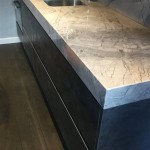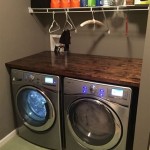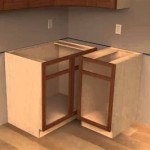Quartz Countertops with Blue Veins: A Comprehensive Guide
Quartz countertops have emerged as a popular choice for homeowners and designers alike, renowned for their durability, aesthetic appeal, and low maintenance requirements. Among the myriad of design options available, quartz countertops featuring blue veins stand out for their unique ability to introduce a touch of elegance and sophistication to any kitchen or bathroom. This article provides a comprehensive exploration of quartz countertops with blue veins, covering their composition, advantages, design considerations, maintenance, and cost factors.
Quartz countertops, unlike natural stone countertops like granite or marble, are engineered stone products. This means they are manufactured using a blend of natural quartz crystals, typically around 90-95%, combined with resins, polymers, and pigments. This manufacturing process allows for greater control over the color, pattern, and overall consistency of the countertop, which is a significant advantage compared to the variations inherent in natural stone. The addition of pigments during the manufacturing process allows for a wide array of color options, including the striking blue hues found in quartz countertops with blue veins.
The "veins" in these countertops are carefully designed and incorporated during the manufacturing process. These veins can mimic the look of natural marble or granite, adding visual interest and depth to the countertop surface. The blue hue, ranging from subtle sky blue to deep navy, can be infused into these veins, creating a dramatic and captivating effect. The precise color and pattern of the veins can vary greatly depending on the manufacturer and the specific design; therefore, careful selection is crucial for achieving the desired aesthetic.
The Advantages of Quartz Countertops with Blue Veins
Quartz countertops, in general, offer several compelling advantages over other materials, and these benefits extend to those featuring blue veins. One of the primary benefits is their durability. The high proportion of quartz crystals in the composition creates a dense and non-porous surface, making it highly resistant to scratches, stains, and impacts. This durability translates to a longer lifespan and reduced risk of damage compared to more porous materials like marble, which can be easily stained by acidic substances.
Another significant advantage is the low maintenance requirement. Unlike natural stone countertops, quartz does not require sealing. The non-porous surface prevents liquids and bacteria from penetrating the material, making it easy to clean and maintain a hygienic surface. Routine cleaning typically involves simply wiping down the surface with a mild soap and water solution. The absence of sealing requirements saves both time and money over the lifespan of the countertop. This is particularly important in high-traffic areas such as kitchens, where spills and splatters are common.
Furthermore, the engineered nature of quartz allows for consistency in color and pattern. While natural stone can exhibit significant variations in appearance, quartz countertops offer a more uniform and predictable look. This consistency makes it easier to match countertops to other design elements in the room. The blue veins, in particular, can be carefully controlled during manufacturing to ensure a harmonious and balanced aesthetic. This consistency does not mean that all slabs will be identical, subtle variations will exist, but the overall appearance will be more reliable than natural stone.
Design Considerations for Blue Veined Quartz
When incorporating quartz countertops with blue veins into a design scheme, several factors should be considered to ensure a cohesive and aesthetically pleasing result. The first consideration is the overall color palette of the space. The blue veins can serve as a focal point, so it’s important to choose complementary colors for cabinets, backsplash tiles, and wall paint. Neutral colors like white, gray, and beige are often used to create a balanced and timeless look, allowing the blue veins to stand out without overwhelming the space.
The intensity and pattern of the blue veins should also be carefully considered. A countertop with bold, dramatic veins can make a statement, while a more subtle, delicate pattern may be better suited for a more understated design. The size of the kitchen or bathroom can also influence the choice of vein pattern. In smaller spaces, a simpler pattern may be preferable to avoid making the room feel cluttered. Consider the lighting in the space when choosing the pattern, as lighting can drastically affect the way colors appear.
The style of the cabinets also plays a crucial role. For a modern look, sleek, minimalist cabinets in a neutral color can be paired with quartz countertops featuring bold blue veins. For a more traditional style, classic cabinets with intricate detailing can be complemented by countertops with subtle blue veining. The choice of hardware, such as cabinet knobs and pulls, can further enhance the overall design. Finishes like brushed nickel or stainless steel can complement the blue tones in the countertop, creating a cohesive and polished look.
The edge profile of the countertop is another design element to consider. Various edge profiles are available, ranging from simple square edges to more elaborate ogee or bullnose edges. The choice of edge profile can influence the overall style of the countertop and the room. A simple edge profile is often preferred for a modern look, while a more decorative edge profile can add a touch of elegance to a traditional design. The thickness of the countertop can also impact the overall aesthetic. Thicker countertops can create a more substantial and luxurious feel, while thinner countertops can offer a more streamlined and contemporary look.
Maintenance and Care of Quartz Countertops with Blue Veins
While quartz countertops are known for their low maintenance requirements, proper care is essential to maintain their beauty and longevity. Routine cleaning should be performed regularly to remove spills and stains. A mild soap and water solution is typically sufficient for most cleaning tasks. Avoid using abrasive cleaners or scouring pads, as these can dull the surface and potentially damage the finish. Always wipe up spills promptly, especially acidic substances like lemon juice or vinegar, to prevent staining.
Although quartz is highly resistant to stains, some substances, such as permanent markers or strong dyes, can potentially cause discoloration if left on the surface for an extended period. If a stain occurs, try using a specialized quartz cleaner or a solution of baking soda and water. Gently scrub the stain with a soft cloth or sponge, and then rinse with water. Avoid using harsh chemicals or bleach, as these can damage the countertop.
While quartz is heat-resistant, it is not heat-proof. Prolonged exposure to high temperatures can cause discoloration or cracking. Always use trivets or hot pads when placing hot pots or pans on the countertop. Avoid placing appliances that generate heat directly on the countertop, such as slow cookers or toasters. These appliances can cause damage over time. It's important to understand that while the resin can withstand moderate heat, extreme temperatures will eventually affect the integrity of the resin and the surface of the countertop.
It is also important to protect the countertop from sharp objects that could scratch the surface. While quartz is scratch-resistant, it is not impervious to scratches. Use cutting boards when preparing food to prevent knives or other sharp objects from coming into direct contact with the countertop. Avoid dragging heavy objects across the surface, as this can also cause scratches. Regularly inspect the countertop for any signs of damage, such as chips or cracks, and address them promptly to prevent further deterioration.
Cost Factors Associated with Quartz Countertops with Blue Veins
The cost of quartz countertops with blue veins can vary depending on several factors, including the brand, the quality of the quartz, the complexity of the vein pattern, and the installation costs. Generally, quartz countertops are more expensive than laminate or tile countertops but less expensive than some high-end natural stone options like marble. The price per square foot can range considerably, depending on the specific design and the geographical location.
The complexity of the vein pattern can significantly impact the cost. Countertops with intricate and realistic blue veining often require more sophisticated manufacturing processes, which can increase the price. The quality of the quartz used in the manufacturing process also plays a role. Higher-quality quartz crystals typically result in a more durable and aesthetically pleasing countertop, but they also come at a higher cost.
Installation costs can also contribute to the overall price. The cost of installation can vary depending on the complexity of the project, the size of the countertop, and the experience of the installer. It is important to hire a qualified and experienced installer to ensure that the countertop is properly installed and sealed. An improperly installed countertop can be prone to damage and may not last as long as expected.
In addition to the cost of the countertop and installation, other factors to consider include the cost of sink cutouts, edge profiling, and any additional customization. Sink cutouts are required for undermount sinks and can add to the overall cost. Edge profiling, as mentioned earlier, can also influence the price. Customization, such as adding a special finish or incorporating unique design elements, can further increase the cost. Obtaining multiple quotes from different suppliers and installers is recommended to ensure a competitive price and to compare the quality of the materials and workmanship. Careful budgeting and planning are essential to ensure that you get the best value for your money when purchasing quartz countertops with blue veins.

Blue Veins Countertop Colors Quartz Granite And More

New Design Of Marble Look Blue Veins Quartz Slabs From China Stonecontact Com

Calacatta Quartz Blue Veins Suppliers Whole Hrst Stone

Portrush Quartz Sample Cambria Surfaces

Blue Veins Countertop Colors Quartz Granite And More

Striking And Elegant Countertops With Blue Veins For A Bold Statement Aa Granite Fabricator Direct

Calacatta Quartz Blue Veins Suppliers Whole Hrst Stone

Palissandro Blue Quartz Venezia Surfaces Stone

Modern White Quartz With Blue Veins Countertops That Look Like Concrete Quartzstone Made In China Com

Calacatta Quartz Blue Veins Suppliers Whole Hrst Stone
See Also








